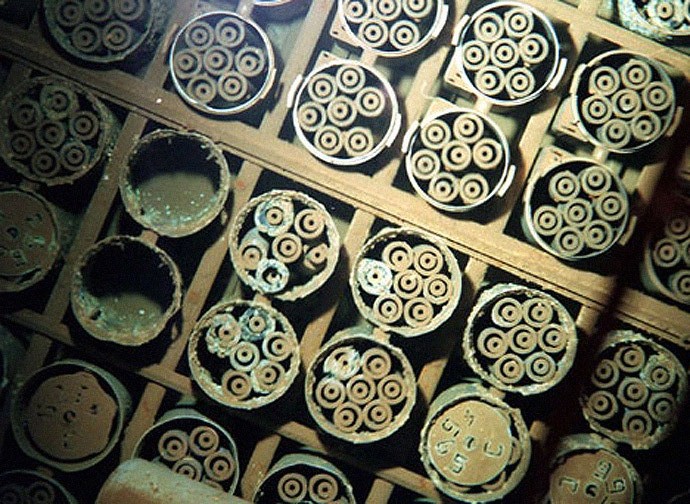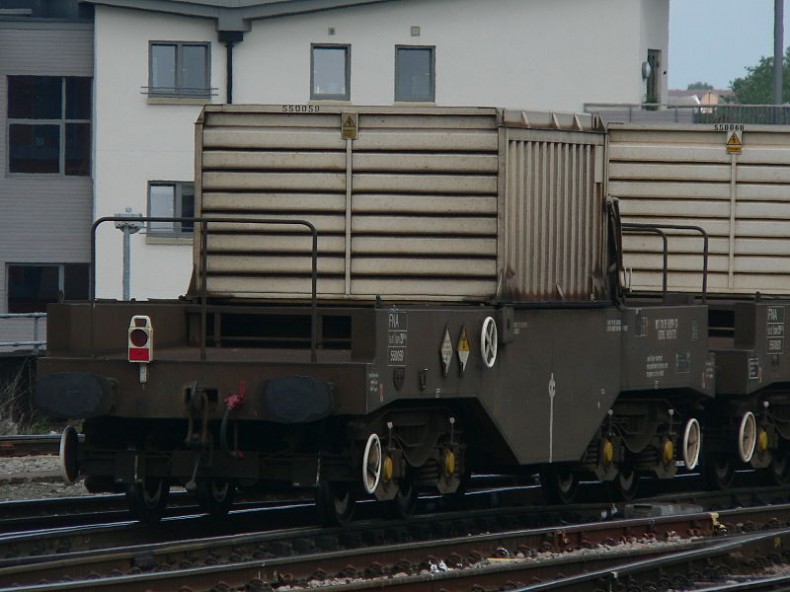A little while ago, I was talking casually to an old arms-controller. “What have you been up to?” I said. “Talking to the Russians,” he said. The Russians he would have been talking to were probably nuclear policy experts or nuclear weapons scientists and they probably would have been talking about ways of controlling international nuclear stockpiles. I didn’t ask for the specifics of what they talked about because 1) this was a social occasion; and 2) 30 seconds into the answer, I would have been in right over my head anyway. My point is, this particular arms-controller is 90 years old. His colleague in arms control, William Perry, ex-Secretary of Defense, is 91 and all over Twitter, e.g., last week: “I personally experienced 2 nuclear false alarms in a period of 4 years – if those alarms had been brought to the President, he would have had 7-10 minutes to make a decision whether to launch our own land-based missiles in retaliation.” Smart, educated, experienced guys. They’re old enough to know about nuclear weapons first-hand; they’re not yet old enough to stand down. You don’t have to think hard to know why.
This was first published September 23, 2014. Over the years, I’ve met a number of physicists who had direct or indirect connections with the Manhattan Project and who then spent the rest of their lives trying to get the nuclear weapons genie back into the bottle and the bottle corked. I think of these physicists as the old arms-controllers. They’re impressive people. They’re not so much uncheery as they are highly focused on the job of corking the genie. Like, they’re pushing 90 years old and still stumping around full of current and complex information, giving talks and publishing things and backing politicians into corners.
Over the years, I’ve met a number of physicists who had direct or indirect connections with the Manhattan Project and who then spent the rest of their lives trying to get the nuclear weapons genie back into the bottle and the bottle corked. I think of these physicists as the old arms-controllers. They’re impressive people. They’re not so much uncheery as they are highly focused on the job of corking the genie. Like, they’re pushing 90 years old and still stumping around full of current and complex information, giving talks and publishing things and backing politicians into corners.
I’ve just read about one (I’m pretty sure he qualifies as an old arms-controller though like others of them, he’s a little opaque to the all-seeing eye of Google) named Thomas Neff. I’m reviewing a book about nuclear weapons. I learned that during the Cold War, the world had 65,000 nuclear warheads and around 2,000 tons of the fissile stuff – mostly weapons-grade uranium and some plutonium — that make nuclear warheads so effective.
All this stuff had to be made: weapons-grade uranium is processed, or enriched, from lesser uranium; and plutonium is manufactured outright. God didn’t make this stuff; we did. It’s all over the place; it’s proliferated to all corners of the earth; most of it is in Russia, the U.S. comes second. And once made, the stuff can’t be unmade; it can’t be destroyed. We’re stuck with it. You have to wonder why God doesn’t get disgusted and just shut down the whole stupid human endeavor, another Flood maybe.
Until Thomas Neff, a physicist/non-proliferation expert at MIT, figured out how the situation might be improved with a little private enterprise.
 In 1991, the Cold War ended without making the world immediately safer. The Soviet Union had split up: Russia was dead broke, and much of its nuclear arsenal was split among the newly-independent countries of Belarus, Kazakhstan, and Ukraine, which were also broke. The reasonable fear was that the nuclear stuff and the nuclear scientists would go to the highest bidder. True, countries were negotiating how to get rid of nukes and the stuff of which nukes are made, but international negotiation is slow and international bidding likely to be much faster.
In 1991, the Cold War ended without making the world immediately safer. The Soviet Union had split up: Russia was dead broke, and much of its nuclear arsenal was split among the newly-independent countries of Belarus, Kazakhstan, and Ukraine, which were also broke. The reasonable fear was that the nuclear stuff and the nuclear scientists would go to the highest bidder. True, countries were negotiating how to get rid of nukes and the stuff of which nukes are made, but international negotiation is slow and international bidding likely to be much faster.
That fall of 1991, Neff wondered whether Russia could un-enrich its weapons-grade uranium, sell it to the U.S., and the U.S. would pay in dollars and use the un-enriched uranium to fuel its civilian nuclear reactors. Neff wrote an op-ed for the New York Times; nobody cared. The following spring, he went to Moscow, walked into the Ministry of Foreign Affairs without appointment, and asked to see an official whom he’d met in DC. He explained to the official that Russia could do the un-enriching in its own nuclear industry, thus keeping secret its exact uranium inventory, keeping its industry going, and keeping its nuclear experts home. The official thought it was a great idea. The idea was put into the hands of two private companies, one Russian and one American, though the respective governments of necessity remained negotiating partners. They called the idea, Megatons to Megawatts.
For the next two years, meetings proliferated; memos and reports went back and forth, full of math, politics, isotopes, economics, acronyms, and quick recoveries from near-deaths. One of Neff’s talents was the ability to maneuver around stalemates; besides, both sides trusted him and he stayed in the middle of things. In March, 1995, all parties agreed. Russian weapons grade uranium was un-enriched – the term of art is “downblended” — in several stages at several different locations and was shipped between them via high-security train cars. Then the stuff was loaded into containers at the St. Petersburg seaport and shipped to the Baltimore harbor, from which it was sent out to American nuclear energy plants.
From 1993 until 2013, Russia downblended 500 tons of weapons-grade uranium, the equivalent of 20,000 nuclear warheads. The U.S. paid Russia $6 billion dollars, which in 1999 accounted for 3 percent of the Russian government’s budget. During that 20 years, Russian downblended uranium supplied half of American nuclear energy and maybe 10 percent of all American electricity. Until last year, we were reading by the light of the Russian nuclear weapons program.
Megatons to Megawatts ended in 2013. Not that we’re done being stupid: the Russians and Americans still have hundreds of tons of enriched weapons-grade uranium, not to mention plutonium. But Neff’s idea, though it required years of political and nuclear experts tying themselves in knots, was remarkably slick: something for everybody, and the bug-nuts nuclear arsenal lessened by 20,000 warheads. And like other old arms-controllers, Neff just kept at it and at it and never quit.
You don’t just propose an idea,” Neff told the MIT Technology Review, “you go do something about it.” Maybe next time God gets exasperated, we could offer up some old arms-controllers and a little Thomas Neff.
_________
This story has three sources — a paper from the Russian Center for Energy and Security Studies, a story by Anne-Marie Corley in the MIT Technology Review, and a short section in the book, Unmaking the Bomb — and where they disagree on facts, I chose the one that seemed most likely to know what it was talking about. Not rigorous, I know; but the sources were good. Another nice story I didn’t see until after I wrote this is by William Broad, who’s been covering these things for centuries and also knows what he’s talking about.
Photo credits: spent nuclear fuel – U.S. Department of Energy, via Wikimedia; British train transporting spent nuclear fuel – Aaron Roberts. I think, but I’m not sure, that “spent nuclear fuel” is more benign than downblended weapons-grade uranium, but it’s still radioactive and we’re still stuck with it.
??I saw an old “60 Minutes” episode about ‘The City of The Chocolate Eaters’, a uranium producing complex in Russia, that was designed to keep producing weapons grade Uranium even AFTER a WW III doomsday. Anyway, what if, they used that unlimited power source, to create a massive greenhouse complex around that place, to mass-grow vegetables and possibly some food trees, using the unlimited heat and super-efficient LED lighting? Israel could collaborate with the Russians on this project, since they seem to have the most experience in the world on the subject of making GIANT greenhouses. The world’s exploding population needs a LOT of food, and if you got a literally unlimited energy source like that, we HAVE the established technology to create an enormous project like that, and aside from providing foods for Russians, it would make an incredibly profitable produce export industry there as well.